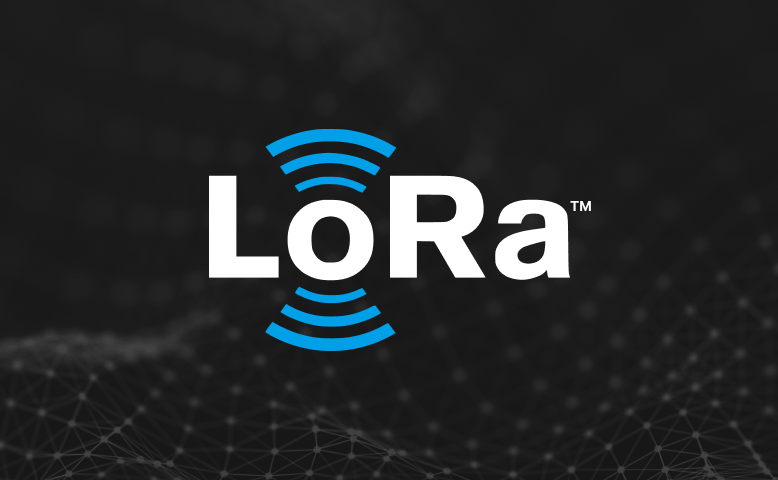
Eco-friendly crypto is no longer a theoretical concept. Thanks to recent innovations in blockchain technology, crypto is becoming more and more environmentally friendly in general. Additionally, there are certain processes and networks that have optimized a way to use very little energy, and thereby actively sustain an eco-friendly process.
In today’s blog we will:
- Explore how a digital currency can become eco-friendlier and identify eco-friendly cryptocurrencies
- Explain how proof-of-coverage networks, like Helium, are especially eco-friendly
- Introduce environmental efforts actively taking advantage of blockchain technology
Eco-Friendly Crypto: The Basics
 Since its inception, Bitcoin has garnered a reputation for being extremely energy-hungry. Especially in the early phases of its technology, the proof-of-work consensus mechanism was considered to be exceptionally inefficient.
Since its inception, Bitcoin has garnered a reputation for being extremely energy-hungry. Especially in the early phases of its technology, the proof-of-work consensus mechanism was considered to be exceptionally inefficient.
But it was clear to many that blockchain technology actually held energy-efficient advantages over traditional network structures. A decentralized network, it turns out, doesn’t need to invest massive amounts of energy into protecting its central server from hackers. Indeed, an automatically immutable ledger is inherently more energy-friendly than a firewalled fort.
That alone underscores the eco-friendly potential of cryptocurrencies. But it goes further than that. As our world finds alternatives to fiat currencies, the environmental weaknesses of physical currencies are exposed: dollar bills need to be printed, transported, stored in climate-controlled safes, and so on. And with transitions to renewable energy sources, the environmental impact of energy-hungry networks grows more subtle.
The energy-intensive weakness of bitcoin is not universal across all blockchain networks and their associated native tokens. That’s especially true when a network innovates on the consensus mechanism it uses.
Proof of Stake: The Current Norm
 Most existing blockchain networks today use a consensus mechanism called “proof-of-stake”. It involves miners wagering earned cryptocurrency on the validity of a network transaction (in other words, putting up crypto as collateral for the right to participate in the network).
Most existing blockchain networks today use a consensus mechanism called “proof-of-stake”. It involves miners wagering earned cryptocurrency on the validity of a network transaction (in other words, putting up crypto as collateral for the right to participate in the network).
Proof of stake has become popular because it’s far less energy-consuming and much faster than a proof of work system. Proof of work, however, is considered a safer mechanism.
That’s because some proof of stake systems tend towards centralization. If there is no limit to how much a miner can stake, the network will tend towards validating those transactions that have the greatest financial backing. Some say that undercuts the decentralized procedure of a true blockchain network.
In our conversation about eco-friendly crypto, it’s important to consider proof of stake systems, however. Because they are much more energy-efficient than proof-of-work, they’ve become synonymous with blockchain’s energy-saving procedures.
But proof-of-work and proof-of-stake are no longer the only consensus mechanisms found in new blockchain networks. A consensus mechanism that’s both low-energy and considered safely decentralized? That’s proof-of-coverage. Its promises are directly tied to its function: providing network coverage.
The Advantage of Proof-of-Coverage Networks
 Whereas proof-of-work systems have significant energy consumption, each node in a proof-of-coverage network can operate at an energy level equivalent to that of a 5W lightbulb (compare that to the 100W bulb that’s probably lighting your room right now). Even measured in annual energy consumption, that’s a negligible amount (with a very low carbon footprint).
Whereas proof-of-work systems have significant energy consumption, each node in a proof-of-coverage network can operate at an energy level equivalent to that of a 5W lightbulb (compare that to the 100W bulb that’s probably lighting your room right now). Even measured in annual energy consumption, that’s a negligible amount (with a very low carbon footprint).
How is that possible? How can technology at the forefront of innovation require so little energy?
Let’s take the Helium network as an example. Helium is a people-powered alternative to centralized cell coverage, providing a LongFi wireless signal to millions of IoT devices. Helium is beginning to expand into a people-powered 5G network, as well, using the very same technology.
Helium operates thanks to countless helium hotspots distributed around the world. These devices, of various make, use minimal power at your home wireless signal to send out a low-power radio signal that physically builds the Helium network.
Devices that use the Helium network can safely transmit data thanks to these hotspots, which maintain security by challenging other nodes in the vicinity for the validity of their coverage signal.
That is the basic functionality of proof-of-coverage tech, used to build a worldwide blockchain network with minimal power consumption.
The best part? Each Helium hotspot is also a Helium miner. Anyone who hosts a helium hotspot (at negligible energy cost) will automatically mine HNT (Helium Native Token) and build a lucrative crypto investment in the long term. It’s green and cheap!
The only barrier of entry is the cost of a Helium miner – these devices sell for around 400 dollars. Here at Emrit, we want to build and enhance Helium by making miners more accessible for people around the world.
Here’s the deal: as a distributed blockchain infrastructure company, we pay for half of your miner, and split the HNT earnings with you 50/50, in perpetuity. Join Emrit for an easy way to start earning eco-friendly crypto!
Environmental Projects and Blockchain
 Eco-friendly crypto isn’t just about low-energy, however. Blockchain technology is already being used by major environmental projects and sustainability initiatives to improve their work in an energy-efficient, secure way.
Eco-friendly crypto isn’t just about low-energy, however. Blockchain technology is already being used by major environmental projects and sustainability initiatives to improve their work in an energy-efficient, secure way.
PlanetWatch, a developing blockchain network, transmits air quality sensor data securely and efficiently using a proof-of-coverage system similar to Helium. Blockchain technology allows the data to be collected in real-time, without the threat of breaches, hacks, or delays.
PlanetWatch is Emrit’s forthcoming second major project, following Helium. More information about it will be forthcoming – in the meantime, feel free to familiarize yourself with its platform and mission.
Earning Planets (The PlanetWatch native token) will be as eco-friendly as can be. As far as cryptocurrencies go, native network tokens from proof-of-coverage systems are certainly environmentally conscientious.
As blockchain technology continues to evolve and networks update their processes and functions, eco-friendliness will continue to increase with established networks as well. And with wind and solar technology beginning to impact the energy mix around the globe, a truly environmentally friendly cryptocurrency is no fantasy.
Any way you slice it, the crypto world is part of a more sustainable future, as it embraces qualities we look for in 21st-century tech.
Summary: The Revolutionary Potential of Eco-Friendly Crypto
Whether you are already a major investor in cryptocurrencies or are just now looking to start your crypto journey, it’s essential to know what kind of impact your investments can have – and how the technology you’re investing in works.
At Emrit, we’ve invested majorly into proof-of-coverage systems, partly because we believe in the respective products and partly because the technological foundation is ingenious. Using already existent radio technology to develop whole new levels of network coverage is a surefire way to kickstart a tech revolution. And stay green while doing it.
In this blog we:
- Covered the eco-friendly basics underlying cryptocurrencies
- Explored the significant impact of technological innovation like proof-of-coverage on the ecological footprint of blockchain technology
- Highlighted how environmental projects are already taking advantage of blockchain technology everywhere
Why not become a part of one of the most promising blockchain networks? Join Emrit and share the wealth of Helium with us. We’re in it for the long haul – and want you to be a part of our worldwide community of dedicated miners.
To learn more, head to our homepage, follow our blog, and subscribe to our Discord. The eco-friendly future of the web is being built as we speak!



